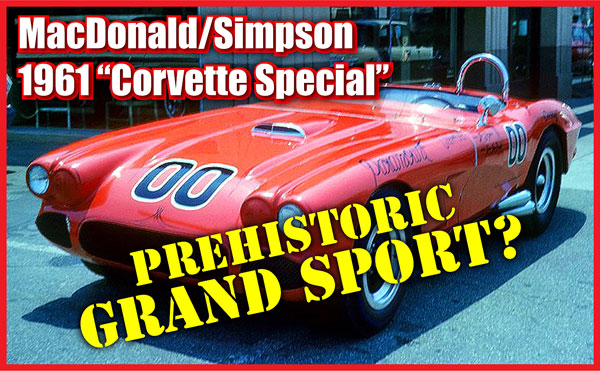What ever became of the first, independent, purpose-built, 1,750-pound Corvette racer?
Unless you are familiar with the early days of Corvette racing, the name Dave MacDonald might not be familiar to you. But 60 years ago, the Corvette and racing community was closely watching MacDonald. Many said that Dave had the potential to be one of the “great” American road racing drivers. Nicknamed the “Master of Oversteer” MacDonald’s tail-out driving style thrilled crowds and chilled competitors.
Meet Dave MacDonald, the Master of Oversteer
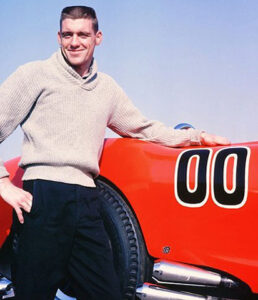 MacDonald was the classic American hero; Hollywood good looks, a family man, a gentleman, understated, humble, yet a hard-charging competitor on the race track. He loved America’s sports car but could take almost any kind of race car to the winner’s circle. MacDonald had the admiration and respect of his peers, as well as support from powerful men in racing.
MacDonald was the classic American hero; Hollywood good looks, a family man, a gentleman, understated, humble, yet a hard-charging competitor on the race track. He loved America’s sports car but could take almost any kind of race car to the winner’s circle. MacDonald had the admiration and respect of his peers, as well as support from powerful men in racing.
Fate had other ideas, though. When the future seemed golden for MacDonald, circumstances found him in the wrong place on the track at the 1964 Indy 500. MacDonald, along with Eddie Sachs, were tragically killed when the car MacDonald was driving, Mickey Thompson’s “Sears-Allstate Special” went out of control on the second lap of the race. The post-race investigation determined that there was “no driver error.” All too soon, a brilliant career came to an end.
Dave MacDonald came of age in the perfect place and time for young car guys – early ‘50s southern California. Think “American Graffiti” and you’re getting warm. Dave’s first ride was an early ‘50s Cadillac. Don’t laugh, those old Caddys had some of the most powerful engines of their day. But it was a 265 V8 ‘55 Corvette that made MacDonald a Corvette man. The lightweight, high revving small-block Chevy engine was perfect for the Corvette. Drag racing was the everyman’s motorsport and MacDonald honed his horsepower handling skills with Corvettes, one quarter of a mile at a time.
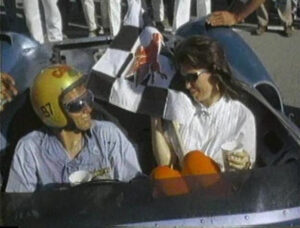 Like many young men of his day, Dave married his sweetheart. MacDonald first saw Sherry Gravett when she was in the lead of her high school play. The pair talked on the phone for two months before she finally met her future husband. Two months after Sherry graduated, the couple were married and started their life together. Dave had a good job at the local Chevy dealer and was able to afford a new Corvette every few years. Dave was still into drag racing, but Corvettes have that “handling thing” that inspires many to go around corners, FAST. But, that’s what Corvettes are designed to do.
Like many young men of his day, Dave married his sweetheart. MacDonald first saw Sherry Gravett when she was in the lead of her high school play. The pair talked on the phone for two months before she finally met her future husband. Two months after Sherry graduated, the couple were married and started their life together. Dave had a good job at the local Chevy dealer and was able to afford a new Corvette every few years. Dave was still into drag racing, but Corvettes have that “handling thing” that inspires many to go around corners, FAST. But, that’s what Corvettes are designed to do.
Meet the MacDonald/Simpson Racing Team
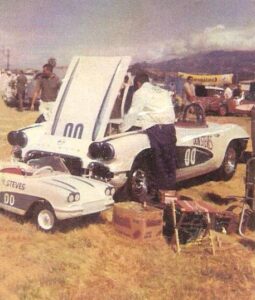 MacDonald struck up a friendship with car salesman Jim Simpson, who soon became MacDonald’s racing partner/sponsor. At Willow Springs in February 1960, MacDonald began his professional racing career. In the first year, the team entered 15 races, finished 1st place three times, 2nd place three times, and 3rd place four times. In his first year, Dave never finished lower than 4th place. 1961 proved to be MacDonald’s breakout year. In 20 events, Dave took 1st place 13 times and 2nd place three times. MacDonald won the first seven races of the season and went on to dominate the season.
MacDonald struck up a friendship with car salesman Jim Simpson, who soon became MacDonald’s racing partner/sponsor. At Willow Springs in February 1960, MacDonald began his professional racing career. In the first year, the team entered 15 races, finished 1st place three times, 2nd place three times, and 3rd place four times. In his first year, Dave never finished lower than 4th place. 1961 proved to be MacDonald’s breakout year. In 20 events, Dave took 1st place 13 times and 2nd place three times. MacDonald won the first seven races of the season and went on to dominate the season.
You just can’t win races like that and not get noticed. While Carroll Shelby had retired as a driver, he was in the thick of things getting his Cobra deal together. According to Dave MacDonald’s son, Rich, it was Shelby who first suggested that Dave should consider a purpose-built car. No one knows if it was just an offhanded comment from Shelby, but the seed was planted.
Purpose-built, tube-framed race cars were nothing “new” in 1961. All serious race cars were tube-framed lightweights. Mercedes-Benz was arguably the leader in this type of construction and had many imitators. Even Duntov used the birdcage frame from a Mercedes 300 SL as his template for the 1957 Corvette SS racer.
One of the two frames Duntov built was later used under Bill Mitchell’s 1959 Stingray Racer and won the 1959 SCCA B/Production Championship. “Tube framed” race cars were the way to go and it just so happened that there was a local legend that built tube frame cars. Enter Max Balchowsky.
Max and Ida Balchowsky Build the Boys a Real Racecar
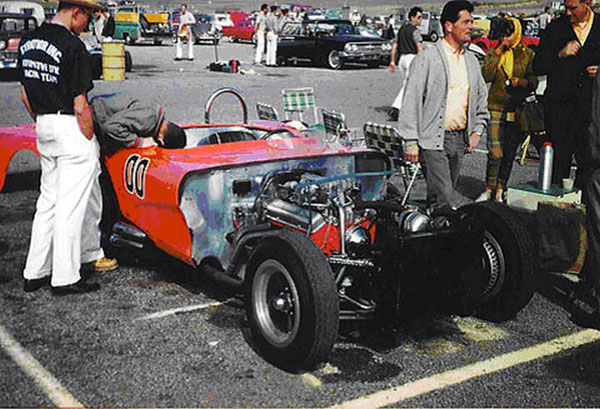 Max and Ida Balchowsky had made quite a name for themselves with their “Old Yeller” racers. Shelby drove Balchowsky’s Old Yeller II in ‘58 and Dan Gurney drove the car in ‘60. So it wasn’t much of a stretch for Shelby to say to MacDonald, “You should get a Balchowsky chassis.” MacDonald and Simpson took Carroll’s advice, and Simpson paid $4,500 for a Balchowsky chassis and running gear (approximately $46,000 in 2022 dollars) – a considerable sum, as a new ‘61 Corvette cost $3,934.
Max and Ida Balchowsky had made quite a name for themselves with their “Old Yeller” racers. Shelby drove Balchowsky’s Old Yeller II in ‘58 and Dan Gurney drove the car in ‘60. So it wasn’t much of a stretch for Shelby to say to MacDonald, “You should get a Balchowsky chassis.” MacDonald and Simpson took Carroll’s advice, and Simpson paid $4,500 for a Balchowsky chassis and running gear (approximately $46,000 in 2022 dollars) – a considerable sum, as a new ‘61 Corvette cost $3,934.
Here’s how the car came together.
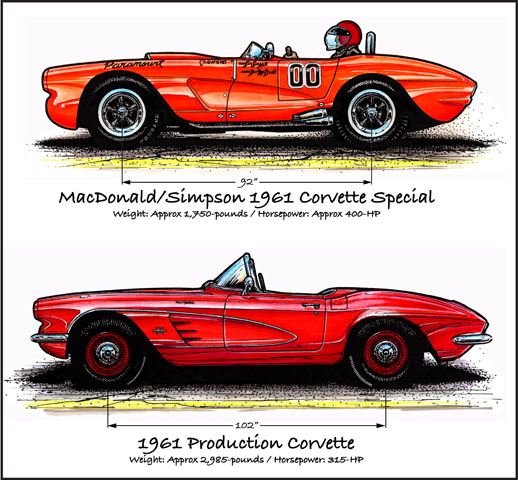 While Corvettes look small today, back in the ‘50s and ‘60s, they were huge compared to other sports cars. Max and Ida built the chassis and MacDonald and Simpson made the Corvette body to fit. There were no companies making fiberglass replica bodies in those days, so Simpson “borrowed for the weekend” a new ‘61 Corvette from Sorenson Chevrolet to make molds to make a Corvette-like body. Continue reading “The Mystery of the MacDonald/Simpson 1961 Corvette Special”
While Corvettes look small today, back in the ‘50s and ‘60s, they were huge compared to other sports cars. Max and Ida built the chassis and MacDonald and Simpson made the Corvette body to fit. There were no companies making fiberglass replica bodies in those days, so Simpson “borrowed for the weekend” a new ‘61 Corvette from Sorenson Chevrolet to make molds to make a Corvette-like body. Continue reading “The Mystery of the MacDonald/Simpson 1961 Corvette Special”

